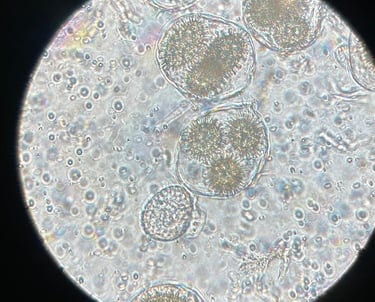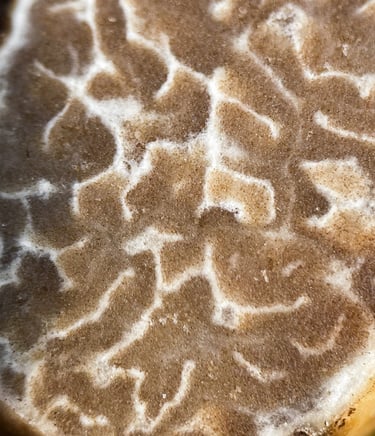Add your promotional text...
Tuber oregonense
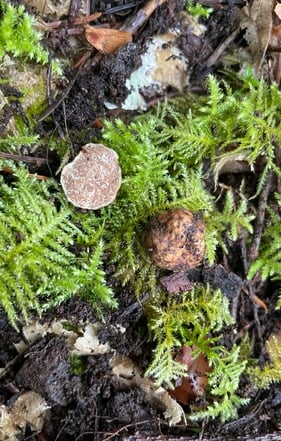

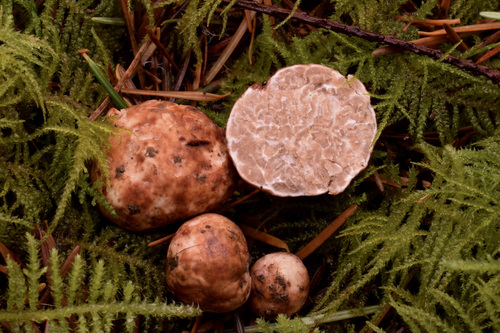

Richard Tehan
Hilary Rose Dawson
Heather Dawson

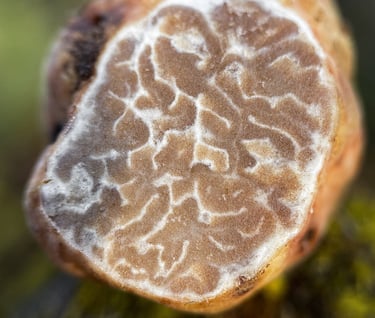
Spore Print: Brown
Habitat: Mycorrhizal with Douglas fir in the Pacific Northwest (Oregon, Washington, northern California)
Season: Late fall to early winter (Nov – Feb)
Basic
Fruiting Body: Subterranean, rounded to irregular, typically 1–5 cm across. Peridium (outer surface) light brown to reddish-brown, smooth to finely warty, darkening with age.
Interior (Gleba): White when immature, becoming marbled with thin white veins against a tan to medium brown background at maturity.
Odor: Distinct, pungent, and highly aromatic when ripe — valued in culinary use.
Texture: Firm and solid when young; softens slightly with age.
Description
Spore Print: Brown
Habitat: Ectomycorrhizal with Douglas fir, often in younger plantations (10–50 years old)
Growth Pattern: Subterranean; detected with trained truffle dogs or careful raking
Seasonality: Fruits in late fall and winter (Nov – Feb), complementing Tuber gibbosum which fruits later in winter through spring
Edibility: Highly prized edible truffle; one of the two main Oregon white truffles (alongside Tuber gibbosum).
Best consumed fresh to capture full aroma; commonly grated or shaved over dishes.
Aroma fades quickly after harvest, so truffles should be used promptly.
Information

